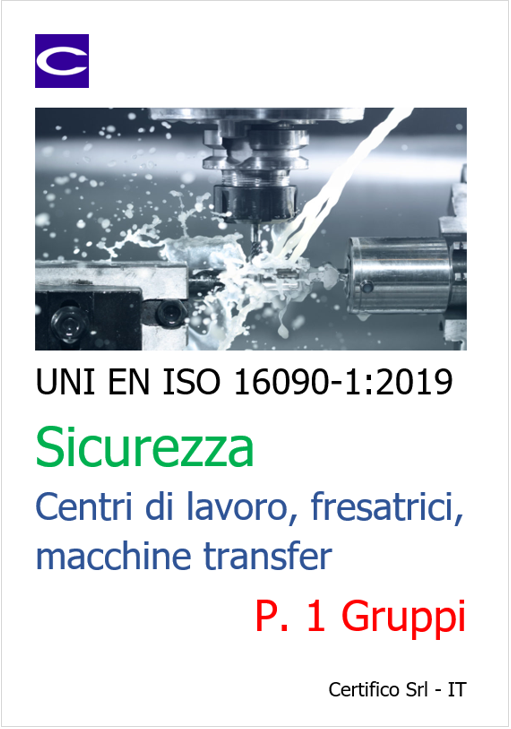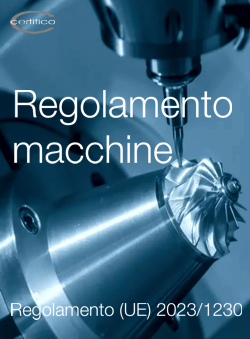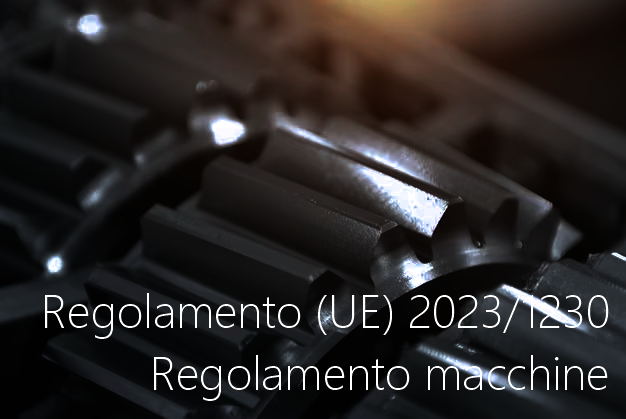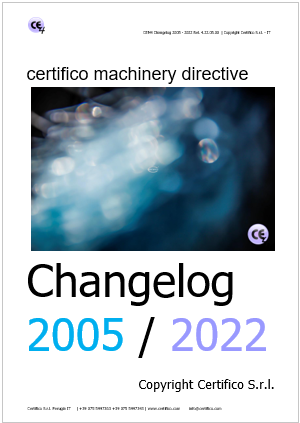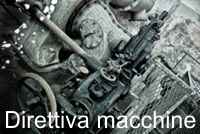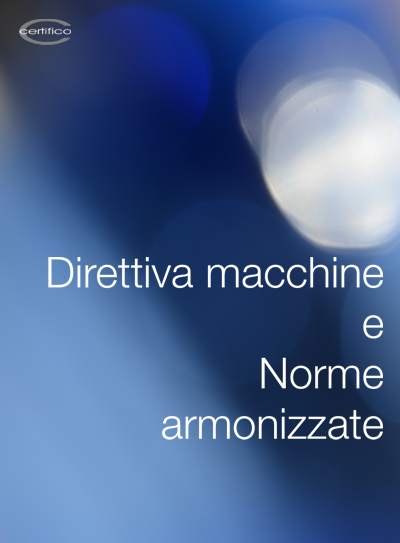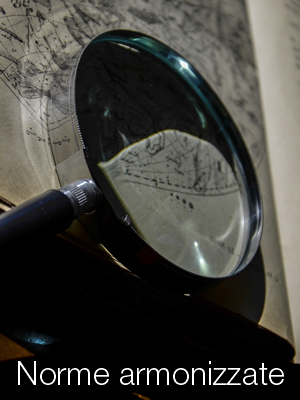UNI EN ISO 16090-1 Sicurezza Centri di lavoro, fresatrici, transfer - P.1 Gruppi
UNI EN ISO 16090-1 Sicurezza Centri di lavoro, fresatrici, macchine transfer / Taglio a freddo metalli - P.1 Suddivisione in gruppi
ID 17927 | 25.10.2022 / Documento in allegato - Licenza ISO Certifico Srl
La UNI EN ISO 16090-1:2019 (tipo C ai sensi della EN ISO 12100), specifica i requisiti tecnici di sicurezza e le misure di protezione per la progettazione, la costruzione e la fornitura delle macchine utensili utilizzate per il taglio a freddo di metalli e materiali non combustibili (alesatrici, fresatrici, centri di lavoro, macchine transfer e macchine speciali. La norma, alla data, non è armonizzata per la Direttiva macchine 2006/42/CE.
Documento d'interesse per i Costruttori (Direttiva macchine 2006/42/CE) e Utilizzatori (D.Lgs. 81.2008).
Doc. 1. Suddivisione in gruppi
Questo primo Documento esamina la suddivisione in 4 gruppi delle macchine in relazione alle applicazioni ed ai relativi pericoli, come riportato in tabella 1.
________
Sicurezza delle macchine utensili - Centri di lavoro, fresatrici, macchine transfer - Parte 1: Requisiti di sicurezza
La norma specifica i requisiti tecnici di sicurezza e le misure di protezione per la progettazione, la costruzione e la fornitura (inclusi l'installazione e lo smantellamento, le modalità di trasporto e manutenzione) delle fresatrici fisse, incluse le macchine in grado di eseguire operazioni di alesatura, centri di lavoro e macchine transfer che sono destinate a tagliare a freddo metalli e altri materiali non combustibili ad eccezione del legno o materiali con caratteristiche fisiche simili a quelle del legno come definito nella norma UNI EN ISO 19085-1, e vetro, pietra e materiali lapidei agglomerati come definiti nella UNI EN 14618.
La norma si applica alle seguenti macchine:
a) alesatrici e fresatrici a comando manuale senza controllo numerico;
b) alesatrici e fresatrici a comando manuale con controllo numerico limitato;
c) centri di lavoro e fresatrici a controllo numerico;
d) macchine transfer e macchine speciali.
La norma tratta tutti i pericoli significativi nonché le situazioni pericolose e gli eventi pericolosi rilevanti per questo tipo di macchine che possono manifestarsi durante il trasporto, l'assemblaggio e l'installazione, la messa a punto, il funzionamento, la pulizia e la manutenzione, l'eliminazione delle avarie, la messa fuori servizio o smantellamento secondo la UNI EN ISO 12100, quando utilizzate come previsto e in condizioni di utilizzo scorretto che sono ragionevolmente prevedibili dal fabbricante.
La norma presuppone l'accessibilità alla macchina da tutte le direzioni e specifica le condizioni di accesso alle posizioni dell'operatore. Si applica anche ai dispositivi di trasferimento del pezzo, compresi i dispositivi di trasporto per il carico/scarico quando parte integrante della macchina.
________
1. Scope
This document specifies the technical safety requirements and protective measures for the design, construction and supply (including installation and dismantling, with arrangements for transport and maintenance) of stationary milling machines (see 3.1.1), including machines capable of performing boring operations (see 3.1.2), machining centres and transfer machines which are intended to cut cold metal, and other non-combustible cold materials except for wood or materials with physical characteristics similar to those of wood as defined in ISO 19085-1, and for glass, stone and engineered/agglomerated materials as defined in EN 14618.
This document covers the following machines:
a) manually, without numerical control, operated boring and milling machines (see 3.2.1, Group 1),e.g. knee and column type milling machines (see Figures C.1 and C.2);
b) manually, with limited numerical control, operated boring and milling machines (see 3.2.2,Group 2), e.g. profile and contouring milling machines (see Figures C.3 and C.4);
c) numerically controlled milling machines and machining centres (see 3.2.3, Group 3), e.g. automaticmilling machines and milling centres, e.g. multi-spindle milling machines, gear-milling machines(see Figures C.5, C.6 and C.7);
d) transfer and special-purpose machines (see 3.2.4, Group 4), which are designed to process only pre-specified workpieces or limited range of similar workpieces by means of a predetermined sequenceof machining operations and process parameters (see Figures C.8, C.9, C.10, C.11, C.12 and C.13).
This document also applies to machines fitted with the following devices/facilities:
- tool magazine(s);
- tool changer(s);
- workpiece handling mechanism(s);
- powered workpiece clamping mechanism(s);
- swarf/chip conveyor(s);
- power-operated door(s);
- additional equipment for turning;
- additional equipment for grinding.
When in this document the sole word “machine” or “machines” is being used, it is referred to all above-mentioned groups and types of machines.
This document deals with all significant hazards, hazardous situations and events relevant to this type of machinery which may occur during transportation, assembly and installation, setting, operation, cleaning and maintenance, troubleshooting, dismantling or disabling according to ISO 12100, when the machinery is used as intended and under conditions of misuse which are reasonably foreseeable by the manufacturer (see Clause 4).
This document presumes accessibility to the machine from all directions and specifies access conditions to operator positions. It also applies to workpiece transfer devices including transport devices for loading/unloading when they form an integral part of the machine.
...
3.2 Groups of machines
With regard to the applications and the relevant hazards, machines are subdivided into four different groups. See the overview in Table 1.
Table 1 - Overview of groups of machines
3.2.1 Group 1: Manually controlled boring and milling machine without numerical control
machine where axis motion is controlled by actuation of a mechanical handwheel or where powered single-axis motion is controlled by mechanical, electrical or other means but without the capability for programmed multiple axes movement
Note 1 to entry: For illustration, see Figures C.1 and C.2.
3.2.2 Group 2: Manually controlled boring and milling machine with limited numerical controlled capability
machine that can be operated like a Group 1 machine by the use of mechanical or electronic handwheels or as a machine with limited NC control by operating controls on the NC panel
Note 1 to entry: For illustration, see Figures C.3 and C.4.
Note 2 to entry: This group of machines may be equipped with some or all of the features of Group 1 machines (manual machines without NC) and the following:
- a limited numeric control system (NC) providing;
- constant service speed (CSS);
- axis interpolation (i.e. copying/predefined profiling);
- thread cutting cycles.
However, the following features shall not be provided:
- automatic program start;
- automatic initiated tool change;
- unlimited rapid axis movements;
- automatic workpiece change or bar feed system.
3.2.3 Group 3: Numerical controlled milling machine, milling and machining centre
numerically controlled machine capable of performing programmed multiple axis movements
Note 1 to entry: For illustration, see Figures C.5, C.6, and C.7.
Note 2 to entry: Such machines may incorporate facilities for manual control in varying degrees.
Note 3 to entry: It is possible to have different machining processes within Group 3 machinery. For these kind of processes, e.g. turning, grinding, etc., see relevant standard.
3.2.4 Group 4: Transfer and special purpose machine
machine designed to process only a pre-specified workpiece or family of workpieces, by means of a predetermined sequence of machining operations and process parameters
Note 1 to entry: For illustration, see Annex C, Figures C.8 to C.13 and Figures D.7 to D.8.
...
4.2 Main hazard zones
...
The main hazard zones are the following:
a) working areas with moving spindle(s) and workpiece(s), clamping components for workpiece and tool clamping, tool changer, copying unit(s), setting places for workpiece(s) and tool(s), coolant under high pressure, special measuring devices (e.g. laser);
b) handling devices for workpiece loading/unloading;
c) tool magazines and tool changers;
d) area surrounding the swarf and chip conveyor (if integrated);
e) exposed gear box;
f) exposed cam mechanisms;
g) lead screw (Group 1: manual machines without NC functions);
h) feed screw (Group 1: manual machines without NC functions);
i) ball screw (Groups 2, Group 3 and Group 4 machines);
l) linear and rotary drives.
…
Vedi Documento
- Pubblicato: 26 Ottobre 2022
- Visite: 11273





